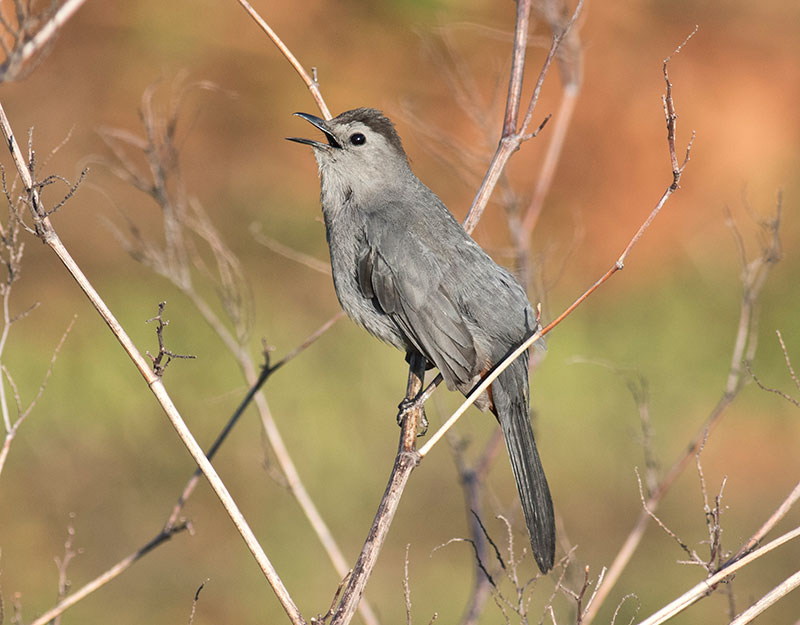Gray Catbirds
8/5/18
By David Brown

Gray Catbird
The gray catbird (Dumetella carolinensis) is one of the most familiar summer birds in Pennsylvania. The name catbird comes from the various calls it makes that sounds like the meows of a cat. It is gray with a black cap. It also has a reddish-brown patch under the tail. The eyes are black. It is 8.5 inches long and has an 11-inch wingspan. For comparison, the catbird is smaller than an American robin and similar in size to a northern cardinal.
Catbirds prefer thick vegetation. They thrive in disturbed and fragmented habitats and are tolerant of humans. The catbird’s primary diet is insects, fruits, and berries. This summer I watched a catbird return day after day to eat the small berries from a vine outside my front window until they were all gone.
The Second Atlas of Breeding Birds in Pennsylvania, which ran from 2004 to 2009, ranked the gray catbird as the fifth most numerous nesting species in Pennsylvania with an estimated 2,380,000 pairs.
The gray catbird’s summer range includes the eastern and central parts of the USA and extends north to southern Canada. In the winter the catbird concentrates along the Atlantic and gulf coasts of the USA as well as Mexico and Central America. It starts to arrive in our area in late-April and stays through early-October. Sometimes small numbers of catbirds may spend the winter in areas of thick cover and abundant berries.
The brown thrasher and northern mockingbird are the other two species in our area that mimic other bird songs. It is easy to identify which you are hearing by counting how many times it repeats each call. The catbird’s song is a long continuous mix of meows, squeals, and whines along with calls of other birds. The catbird tends not to repeat any of these sounds but rather hurries to the next one. The brown thrasher sings each call twice. The northern mockingbird often repeats each call five or more times.
Fall migration is now beginning. Migrating shorebirds were reported throughout Pennsylvania in July as rain grounded them. Raptor migration begins in August as the first ospreys, bald eagles, and broad-winged hawks begin to head south. By early-September warblers and other songbirds will be migrating in significant numbers. Fall migration is spectacular because this is the time of year when bird populations are at their highest. Pay attention to the changing behavior of birds over the next few months as summer turns to autumn.